Zoë Sheng
Petroglyphs along the Bangucheon Stream
Petroglyphs along the Bangucheon Stream (Inscribed)
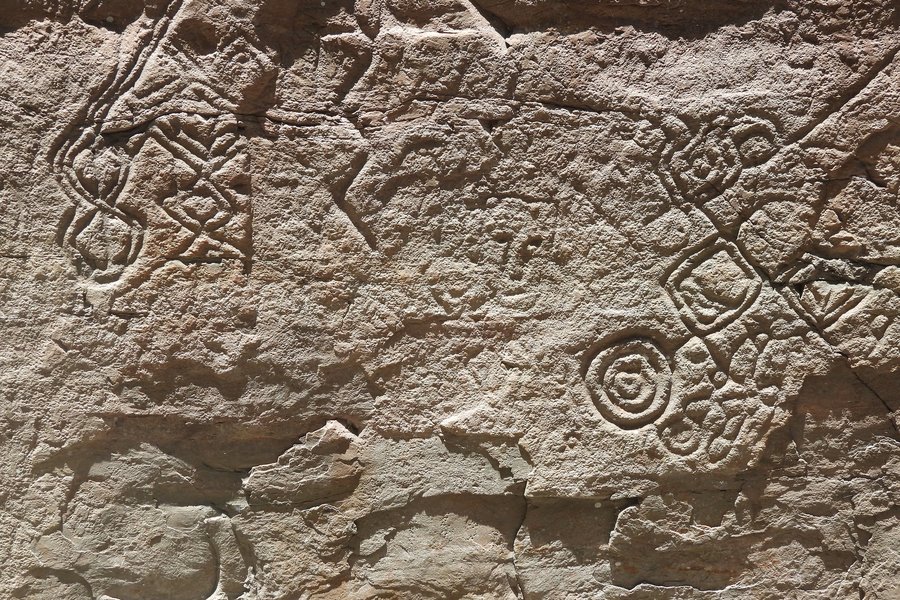
I wanted to visit this place years ago, 2015?, but the local bus line to get there was horrible. I ended up in the town of Ulsan which is easy enough, waiting for the local bus...well the display was digital (new and flashy back in the days) and the bus line wasn't shown. Eventually it did but the display was showing the time to arrive at this bus stop which is another hour...omg. Well, crazy as it is, a French guy and his Korean gf walked by so I asked about the bus and she checked her app to know it's another hour and gave me info on the return. Well, this wasn't good. TLDR don't go there with public transportation unless you have heaps of time or know the actual times ... best would be with Korean knowledge. Anyhow, I see most people taking a taxi there but I just went to Busan to cool off which Gamcheon Culture Village helping a lot there.
A few years later I drove around Korea by myself and voila I made it to Ulsan. I obviously went to the stream and the first thing you want to do is visit the museum. It was quite busy with school children on that day so my impressions are a bit mixed. It's definitely a must-see though. I then drove further out (it's walkable) and parked just in front of the stream. It's not really official parking and only a few will park but …
Keep reading 0 commentsFrederik Dawson
Petroglyphs along the Bangucheon Stream
Petroglyphs along the Bangucheon Stream (Inscribed)

Summer 2023 while driving on the highway from Busan to Gyeongju, I decided to take a meaningful detour. Along the way lie two important sites, the famous Tongdosa Temple, a UNESCO World Heritage Site, and the lesser-known Bangudae Petroglyphs, at that time on UNESCO’s Tentative List. Curious to explore something more off the beaten path, I headed toward Bangudae. The road leading from the highway to the Bangudae Petroglyph Museum was freshly paved and well-kept, likely part of a beautification effort as the site prepares for potential World Heritage status. Instead of stopping at the museum immediately, I continued on to a small alley where a walking trail to Bangudae begins. The path runs alongside a peaceful river, offering a gentle immersion into the Korean countryside. I passed a lively riverside restaurant where a group of Korean hikers were enjoying cold beers after a long walk. Further along, I encountered two local tombs and even a site of dinosaur footprints, a reminder of the deep time embedded in this region.
At the end of the trail, I finally reached the Bangudae Petroglyphs, carved into a cliff across the river. But from that viewing point, the carvings were difficult to make out. The famous images of whales and ancient hunting scenes were nearly invisible to the naked eye. Honestly, it was a bit underwhelming. Returning to the museum, however, changed everything. Inside, I found a detailed replica of the Bangudae Petroglyphs, and as I studied it, a wave of …
Keep reading 0 comments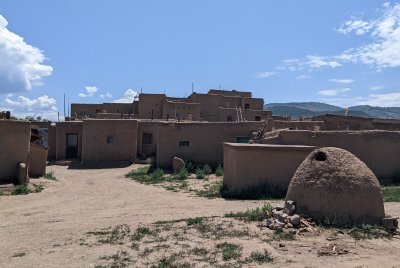
I loved the Taos Pueblo! We went on a day trip from Santa Fe in July 2024. It was a very hot day but we still enjoyed walking around. It was bigger than I thought - I had seen pictures of the main building but didn't realize it was a whole village. Beautiful architecture. It's a picturesque spot with lovely mountains in the background. You can't go everywhere, but can still see a lot. Our tour guide was a young woman from the Taos Pueblo who was in college but came back in the summers, and had some interesting perspectives on both historic and modern life in the pueblo. There weren't too many people there, but we also enjoyed talking with a few of the shopkeepers. A really unique experience! We saw interesting abandoned pueblo ruins in New Mexico at Bandolier National Monument (which I highly recommend) and also Pecos National Historic Site, but at Taos it's amazing because the pueblo has not been abandoned, it's been kept up for 1000 years using the same techniques. A must see if you're interesting in Native American history and life.
Keep reading 0 commentsKevin McFarland
The monastery of Noravank and the upper Amaghou Va
The monastery of Noravank and the upper Amaghou Va (On tentative list)
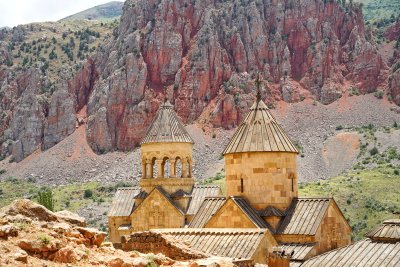
I have visited this site three times in the past two years (including the day I am writing this review). Armenia is a country rich with ancient monasteries, with all three of their WHS as monasteries. With that in mind, does the list have room for one more? Tatev Monastery, which is found further south, is planned for 2028, perhaps leaving Noravank left on the tentative list for many more years. I hope that is not the case!
Getting to Noravank involves a beautiful drive through the Gnishik Canyon, past several caves and towering red cliffs. The monastery itself is a true work of art created by Momik, who was also credited with the nearby Areni church and the old 13th century bridge that spans the Arpa River nearby. I appreciate how the monastery seems to blend in with the surroundings, creating one of the most atmospheric sites in all of Armenia.
As a mixed site, the surrounding landscape has several well established hiking trails with Bezoar goats and even bears roaming around. Several caves are found there as well, including the world famous Areni-1 cave located just 6 km from the monastery. The oldest shoe as well as evidence of the oldest wine-making process in the world was found in this cave (over 6,000 years old)! If the entire nomination encompasses this whole 6-km long canyon, starting from the cave and ending in Noravank, I believe it would be a very worthwhile addition to the World Heritage …
Keep reading 0 comments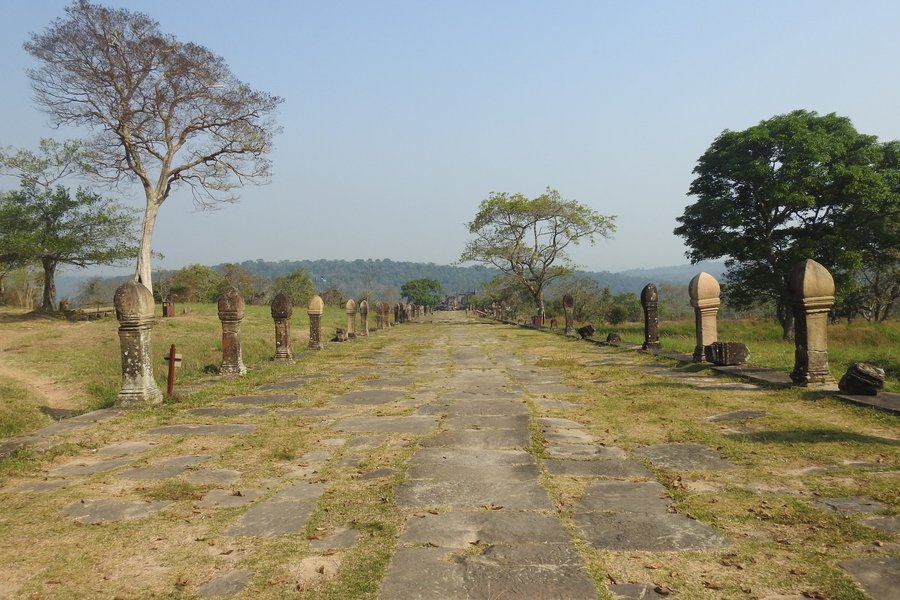
Situated just 300 meter to the Thai border, this was a disputed area, until the international court of justice intervened on request of the Cambodian government, handing it to Cambodia, in 2008. Subsequently, it was declared a WHS site in the same year. From the top, one can actually see the Thai military outpost, boasting their national flag.
You're brought to the ticket office and transferred to a 4x4 vehicle. As the site is located at 620 masl, the temperatures are slightly more agreeable. when I visited there was no one else on the site. It's basically a giant causeway climbing 100 with 5 buildings/temples, in different states of deterioration/restauration, dating from the 9th to the 12th century. The name means holy pagoda, but is not the original name of the site.
Although big parts of the temples have collapsed and show different levels of deterioration, still, some amazingly hindu and buddha art can be appreciated carved into the locally quarried sandstone, including but not limited to shiva, vishnu, brahma. The views from the top are amazing, too.
Three countries are actively working on restoration of the site: China, India, USA, but, according to my guide they only communicate indirectly through UNESCO and the local restoration organisation.
Getting there
As of 2025, daily tours can be booked from Siem Reap, visiting both Preah Vihear and Koh Ker in one day for 100 USD.
Keep reading 0 comments
I visited this WHS in spring 2025 staying overnight after visiting the inscribed rice terraces. I agree that Vigan is a highlight in a country with not so many historic cities as well as probably the best-preserved example of a planned Spanish colonial town in Asia so it surely deserves its place on the WH list. However, it lacks the attention and the restoration efforts other Spanish colonial WHS were given in other continents and it suffers quite a lot from internal and continental overtourism.
That said, with some extra effort to visit early morning before all the souvenir shops open and before all the town comes bustling to life, I managed to enjoy the several historic buildings and its urban planning (including the usually crowded Calle Crisologo), keeping my eyes peeled for the Chinese/Ilocano influences such as the sliding windows/shutters as well as the Chinese statues on the Metropolitan cathedral or the Benedictine monastery facades. Some historic buildings worth visiting also for their interior are the Syquia Mansion Museum, the Crisologo Museum, and the Padre Jose Burgos House and National Museum. In each building or just outside there are metal UNESCO WHS inscription plaques, apart from the WHS Monument and plaque in Burgos street.
In the evening, it was fun to watch the Holy Week Procession with small statues after having experienced the much more pompous procession in Antigua Guatemala last year, while after trying different delicious delicacies which were sold at the several stalls around town. …
Keep reading 0 commentsWojciech Fedoruk
Sites of Japan's Meiji Industrial Revolution
Sites of Japan's Meiji Industrial Revolution (Inscribed)
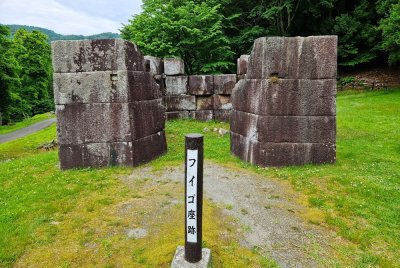
Since most of the components have already been described in details by others, I will focus on probably the most inaccessible of them, Hashino Iron Mining and Smelting Site. I visited Hashino on the way from Hiraizumi to Shirakami-Sanchi, and the place is located only 1.5 hours from the former. The end of the road to Hashimo is around 20 km on serpentines on a completely empty but even road. I was afraid that we would arrive and see nothing, but unnecessarily - there is a decent visitor center here, with a film and brochures in English. Everything is free of charge, open daily from 9:30 to 16:30, closed from December 8 to April 1.
Hashino is associated with Takato Oshima, the father of the Japanese iron industry (also involved in the development of gold mines on Sado Island), who initiated the construction of blast furnaces in Hashino in 1858, at the end of the Edo period. The location was not accidental; ore was mined in the surrounding mountains and transported only a few kilometers to Hashino. Iron smelting did not last long; the site was closed after 36 years, already in the 19th century, although ore extraction continued for many more years. There are few permanent remains here - stone ruins of several furnaces, warehouses, workers' housing and the remains of a quarry. All of this is covered by a short educational trail, which takes about 30 minutes to complete. You can learn more about the site in …
Keep reading 0 commentsZoë Sheng
The Prehistoric Sites of the Khorramabad Valley
The Prehistoric Sites of the Khorramabad Valley (Inscribed)
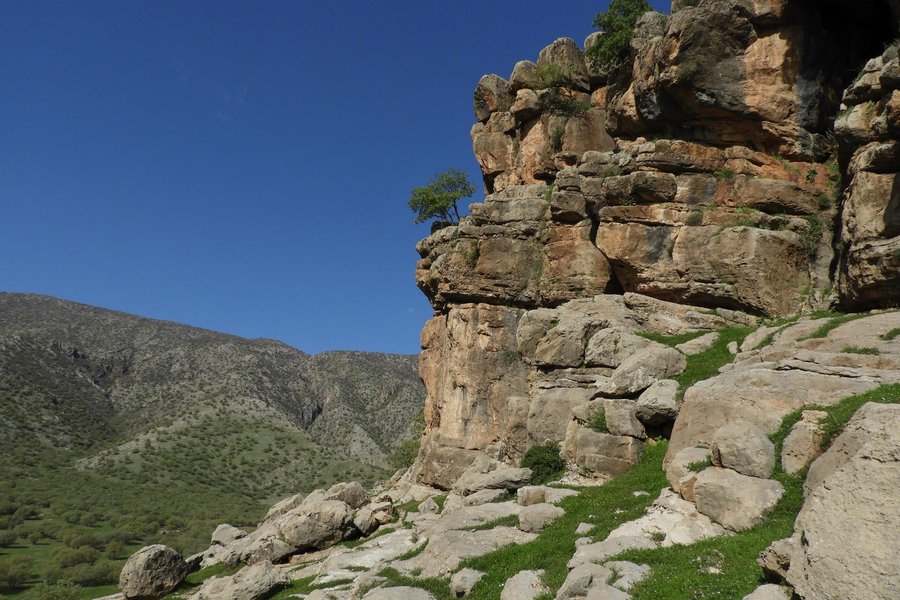
Don't do what I did: come here in winter! It gets snowy in the area. The area is still open though. The main attraction and definitely ONE of Iran's main attraction to see is Falak ol-Aflak aka Shapur Khast Castle which is based on the town of Khorramabad. It makes me wish I had a drone to cover it better, similar to Palmanova. The pictures you can find online are better and definitely something that will inspire you to go. So maybe Iran isn't quite on the "green" list of places to go with their political drama but if you DO make it to Iran then don't just visit Tehran and ensure you visit the castle.
The location of the valley encompasses the entire area. In fact I don't think it REALLY wants to cover the castle as well. It is more about the caves that are not all visitable as far as I understand. Let's first finish off the castle though. Inside, which is mainly nice for the shape, you also gets a museum. It covers the entire valley stuff too so while it isn't going to be major insight into life 40,000 years ago you will learn more about the area and it's surely a must-see.
As for caves, I suggest Kogan Cave. It's a bit south of Khorramabad. It took me an hour to reach the places to park but wait, you still have to hike up to the actual cave! It takes a good …
Keep reading 0 commentsI love Zhangye! However, to include them would be like missing out on better non-inscribed places like Vinicunca (much better than here!), Painted Hills and Hornocal. I probably missed something but these are big examples of the colorful rocks in the ground turned sideways and thus showing up at the surface.
It's been almost 10 years since my visit. I remember flying into Zhangye, grabbing a taxi, then stopping at the colorful hills. The ticket price includes the mandatory shuttle bus because it's just too far to walk from the main entrance. There are also a few stops so you get on and off to get around. Finally, you also drive past some old filming locations which may be gone or abandoned by now.
When you get to a stop you can hike up the small path and view the colorful rocks higher up. With good sunlight it makes for marvelous views. You finish up and see another sight. Overall it will take 2-3 hours due to the long transfers involved. Totally worth it though.
The only problem is: it's better in Peru... it's...the same? It's also not the only place in the world that has this. Either make a worldwide entry for these kind of sites or don't bother with your single entry. It's a shame because the site is a must view but not world heritage on its own.
Keep reading 0 comments
Visit date(s): May 1, 2025
Nearby sites on trip: Over 2 weeks: Bamberg; Potsdam; Primeval Beech Forests, Serrahn; Stralsund and Wismar; Lübeck; Green Belt (T), Schaalsee; Schwerin Residence Ensemble; Berlin Modernism Housing Estates, Wohnstadt Carl Legien; Museumsinsel.
Overnight location: Stuttgart before, Bamberg after
Location(s): Antonine Wall (August 2004), Hadrian’s Wall (spring 1996), German Limes: Fort site and civil settlement of Jagsthausen central and eastern part (Römerbad, 2025, present review focus and photo)
Travel method(s): Car. We were crossing the Roman frontier, so I looked for a site that wasn’t far off our route. We also saw a sign along the road when we crossed the Limes.
Travel duration: ~1-2 hours between accommodations and site
Visit duration: less than 1 hour
OUV: Hadrians Wall is the most complete of the three frontiers. We travelled the length of it years ago and enjoyed stopping at each location along the way. The Antonine Wall and German Limes could be tackled in a similar way, but I’m not sure there are modern routes that parallel as nicely, so it might involve quite a bit of weaving around. However, if we’re on a route that crosses either, parks with Roman remains make interesting rest and stretch stops.
Best of: Information plaques showed how the artefact pieces fit into the Roman structures.
Worst of: Individual sites are small and isolated, so visiting several may require some travel.
Keep reading 0 comments
Visit date(s): May 1999, October 10, 11, 15, 2024
Nearby sites on trip: Ancient Nara (1999)
Overnight location: Kyoto
Location(s):
- Ginkaku ji (1999)
- Ryoan-ji (1999)
- Nijo-jo (1999, gotta love that floor)
- Hongan-ji (nishi-) (October 10) (photo)
- Enryaku-ji (October 11)
- Kamigamo Shrine (October 15)
- Shimogamo Shrine (October 15)
Travel method(s): Foot, train, funicular, cable car, taxi, subway, bus
Travel duration: Minutes, to over an hour for each
Visit duration: 1-3 hours / location
OUV: This is a large collection of exceptionally preserved buildings. In comparison to Hiraizumi, there are many more buildings, but both have very beautiful gardens. Remarkably, these buildings are still used for their original purposes, hundreds of years later. We will continue to visit.
Best of:
Much to our delight, Hongan-ji has a nightingale floor, like Nijo-jo. With the technology changes over the last 25 years, we now have a recording of this gentle chirping. It was one of my most vivid memories after the first visit.
We also really enjoyed the round trip to Enryaku-ji. This involved a train, a walk, a funicular, a walk to and around the temple and across the mountain ridge, a ropeway, a cable car, a taxi, another walk and a subway train. This was a very varied and pleasant way to spend a day.
Shimigamo and Kamigamo shrines are connected by the Kamo river and the walking route between them is …
Keep reading 0 comments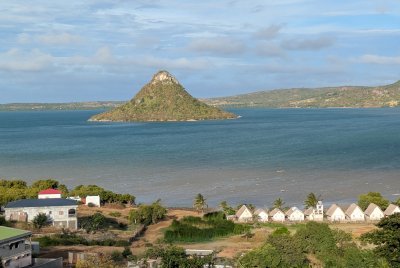
I must confess, that I did not step on Nosy Lonjo in person. I only viewed it from the mainland shore near the city of Diego Suarez. Visiting it is mostly forbidden. It's an island with a peculiar conical shape that makes it sort of a logo for Diego Suarez. Other than the unique shape, there isn't really much to recommend it. It's supposed to be a sacred island, and from what I was told and have been able to read, there are tombs on the island, and sacrificial rituals have been (are?) performed there. But I don't really see any Outstanding Universal Value at all.
Keep reading 0 comments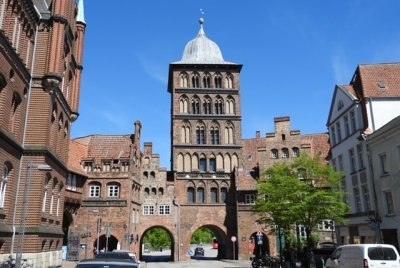
Visit date(s): May 8 & 9, 2025
Nearby sites on trip: Over 2 weeks: Frontiers of the Roman Empire, German Limes; Bamberg; Potsdam; Primeval Beech Forests, Serrahn; Stralsund and Wismar; Green Belt (T), Schaalsee; Schwerin Residence Ensemble; Berlin Modernism Housing Estates, Wohnstadt Carl Legien; Museumsinsel.
Overnight location: in the old city area, but not within a core zone
Location(s): Walked around each section of the core zone, entered some of the churches.
Zone 1: Burgtor (photo), Burgkloster, Schiffergesellschaft, Jacobikirche, Heiligen Geist Hospital, Füchtingshof, Katharinenkirche
Zone 2: Holstentor, Salzspeicher, Petrikirche, Dom
Zone 3: Marienkirche, Rathaus, Marktplatz
Travel method(s): car, foot within core zone
Travel duration: Over an hour from Neuklostersee and to Schwerin
Visit duration: 1.5 days
OUV: There is certainly a wide variety of buildings from the Hanseatic period that have been well preserved. The old area is a similar size to those of Stralsund and Wismar, despite the war losses. The feel is a little grander than the other two, with the Holstentor and city planning. Overall, it is a worthy site.
Interestingly, there is a 19th century synagogue next to the Museumsquartier St. Annen, that survived the war (although damaged) and is now in use again.
Best of: Holstentor and the Marienkirche, Rathaus and Markt area were the most impressive (as long as one faces the right direction).
Worst of: The location of the modern shopping centre entrance makes it almost impossible to get a …
Keep reading 0 comments
We visited this WHS in June 2025 and were pleasantly surprised, especially considering the generally reserved tone of previous visitors. Admittedly, the Abbey and Altenmünster of Lorsch are not among Germany's most unique or impressive World Heritage Sites. Yet, we enjoyed our stay, mainly because of the charming town of Lorsch itself and the enthusiasm of our tour guide. As previous community members have already described the site well, I would like to focus on some practical tips for visiting.
Getting to Lorsch
As already suggested, the city of Mannheim is a good choice for a base, not only for Lorsch but also for other World Heritage Sites in the area. If you have the "Deutschlandticket" (a monthly subscription ticket that allows you to use all regional transportation in Germany), travel on all regional express trains is included, making it easy to reach various sites from Mannheim. Depending on your travel plans, it may actually be cheaper to purchase this ticket. Just remember to cancel the subscription before it auto-renews. Lorsch is about one hour from Mannheim by public transportation, and the main building of the Abbey can be easily reached on foot.
Tips for the visit
Based on our experience, the following tips may help you make the most of your visit:
- The Altenmünster itself is located further outside of town, although you can easily combine visits to both sites. If you are pressed for time, feel free to …
Clyde
Rice Terraces of the Philippine Cordilleras
Rice Terraces of the Philippine Cordilleras (Inscribed)
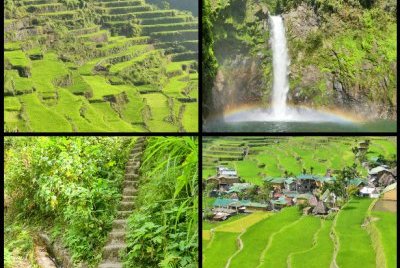
I visited 3 locations of this WHS (Batad, Bangaan and Mayoyao) in spring 2025, although I focused mostly on what I think is probably the best and largest location, i.e. Batad, since I slept there for 2 nights instead of sleeping in Banaue and wasting precious time getting to and from the core zone. All the locations I visited had handpainted metal plaques proudly displaying their status as a WHS.
At each location, usually there is someone from the Ifugao community collecting a minimal fee (unless you start very early or arrive quite late in the afternoon). Jeepneys or small motorcycles with makeshift sidecars are the cheapest mode of transport to get from one location to another and then hike to the heart of the rice paddy communities. The former are your best bet if you want to cover longer distances such as Mayoyao or the other components I haven't visited. It must be said that perhaps Mayoyao is also more convenient if you happen to start from Vigan and then head towards Manila after your visit. Of the three, Mayoyao was surely the quietest with virtually no visitors except for myself, but it was also the less scenic and the least impressive. Perhaps its only peculiarity are the in situ tombs but IMHO they weren't worth the extra time and effort to get there and I would certainly not suggest staying overnight here as there are almost no facilities at all when compared to the other locations I …
Keep reading 0 comments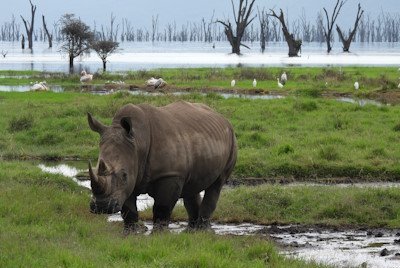
It’s a miracle that this WHS is not In Danger, or that this issue is not being discussed. Since approximately 2015, the Kenyan Lake System has experienced severe flooding. The causes are not yet fully understood, but higher annual rainfall, degradation of the surrounding land due to deforestation and urbanization, and even possibly ‘closing’ of the tectonic plates under the Rift come into play. The floodings keep the flamingoes away from their once favourite habitat as they cannot wade in deep waters and the level of water salinity has changed as well. All 3 criteria that make up the Lake System’s OUV are at least partly related to those flamingoes (“the single most important foraging site for the Lesser Flamingo in the world with about 1.5 million individuals moving from one lake to the other”), and these numbers simply are not present anymore. To make matters worse, the smallest of the included lakes, Elementaita, seems already beyond repair according to IUCN in its Outlook 2020 because of uncontrolled development of its surroundings and the partial loss of Ramsar conservation status.
Kenya has submitted a State of Conservation report of the Lakes to this year's WHC, and with funding from the Dutch government hopes to fulfill all recommendations which it hasn’t been able to accomplish on its own for the past decade (the additional funding is 45k USD, which to me seems like a drop in the ocean).
I visited the area via a half-day private safari in …
Keep reading 0 comments
Last summer, I decided to explore Butrint, a UNESCO World Heritage Site renowned for its deep historical roots and ancient ruins. Nestled near the southern coast and close to the increasingly popular towns of Sarande and Ksamil, Butrint seemed like the perfect cultural stop to balance out Albania’s sun-and-sea appeal. Unfortunately, visiting during peak season turned out to be more frustrating than fulfilling. The drive from Ksamil was the first hurdle. Traffic was completely jammed with beachgoers and tour buses, inching their way through narrow roads. Albania's Riviera is clearly booming in popularity, and it shows, especially in places like Ksamil, where every square meter seems overtaken by tourists. By the time I arrived at Butrint, the car park was already overflowing. After several loops without luck, I had to park along the road, far from ideal and hardly safe.
Inside the archaeological park, the situation didn’t improve much. The site was packed with tourists, guided groups, families, and independent travelers all crammed along the same paths. The atmosphere felt more like a busy festival than a heritage site. It became hard to appreciate the historical setting with the constant movement, noise, and lack of order. At times, simply taking a photo without a crowd of tourists in the background meant waiting quite a while, and when I finally got a clear shot, it felt like winning the lottery. The ruins themselves are pleasant, and it's always fascinating to walk through a space where Greek, Roman, Byzantine, and Venetian …
Keep reading 0 comments
I visited Ancient Olympia on the very day of the opening ceremony of the Paris Olympic Games 2024, hoping to catch some special activities or celebrations connecting the ancient birthplace of the Olympics with the modern global event. To my surprise, the site was peaceful and quiet, with no visible link or festivities marking the occasion. Despite the significance of the date, there was nothing at all to highlight the connection between the ancient games and today’s Olympics. Nevertheless, the visit was far from disappointing. Walking among the ruins of the ancient stadium, temples, and training grounds offered a humbling glimpse into the origins of this world-renowned sporting tradition.
One of the most impressive sights was the Temple of Zeus, once home to the massive statue of Zeus, which was considered one of the Seven Wonders of the Ancient World. Although now largely in ruins, the remaining columns and foundation still convey a powerful sense of grandeur and magnificence. Standing there, it’s easy to imagine the scale and awe that this temple inspired in visitors thousands of years ago. Nearby stands the Temple of Hera, one of the oldest temples at Olympia and an important part of the site's legacy. It’s here that the modern Olympic flame is lit before every Olympic Games, during a solemn and theatrical ceremony using a parabolic mirror to harness the sun’s rays, a symbolic gesture linking ancient ritual to modern global unity. Approaching the Ancient Stadium, it was tempting to …
Keep reading 0 comments
This is one of my personal favorite WHS. However, even for visitors from our own country, its history remains quite unfamiliar, and the site itself is not among the more popular tourist destinations. That’s why I’d love to share a bit about my experience here.
In October 2023, just before the first snow, I visited this site with my family during a long self-driving trip along the China–North Korea border.
The different parts of the site are scattered around the outskirts of Ji'an, a lively small town with a large ethnic Korean population. It’s not easy to get there by public transportation, so having or renting a car really helped.
Before entering the site itself, we first visited the Ji’an Museum in the town. It provides a great introduction to the history of the Goguryeo Kingdom and displays exquisite artifacts excavated from the site. My personal favorites were the horse ornaments, which had a very unique and striking style. The whole museum can be visited in about an hour, and I highly recommend stopping by before heading to the heritage site.
After that, we drove to Wandu Mountain City, located in the mountains, featuring the remains of city walls, gates, and palace foundations. It was late autumn, and the mountains were absolutely breathtaking with vibrant colors—locals call this rich autumn landscape five-Colored Mountain. We first walked to the palace site, where only the foundation remains are still visible, right next to a cornfield tended …
Keep reading 0 comments
Admittedly, I was not excited to check off this site — I wasn’t sure what to expect, and six components spread out seemed daunting. And it was hard to find information.
But, I ended up visiting all components over three days in Berlin and the site ended up winning me over. But, I am a sucker for modern architecture, Bauhaus, and the likes.
I got more out of the sites for two reasons. First, I started at the Into Station and Cafe at Briz, which is open on Friday and Sunday afternoons. There is a museum (1 euro entry fee) with a ton of information in German and English and a model apartment. It was the highlight of my visit. Second, www.welterbe-moderne-Berlin.de has great information on these sites and even mini walking “tours” pointing out key components of all the sites with maps It was tremendously helpful and I got a lot more out of the sites as a result
Logistics: I will start out with a warning: DO NOT BOOK the Ticket B tour of Siemensstadt, which advertises going into an apartment in Siemensstadt, because the apartment visited is in a nearby complex and belonged to one of the Siemensstadt architects, but it was built 30 years after Siemensstadt and is NOT part tix the UNESCO site. I wasted 39 euros and 5.5 hours (transit one hour each way and a 2.5 hour tour) to end up not getting anything more out of the experience than …
Keep reading 0 comments